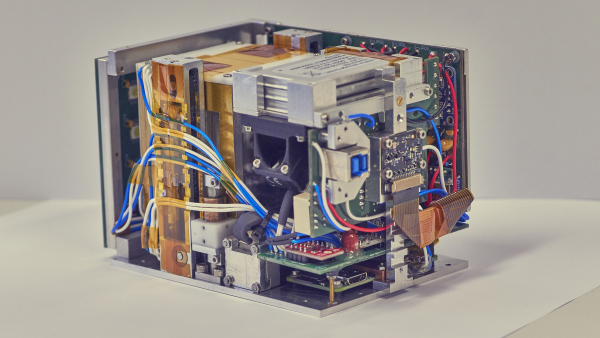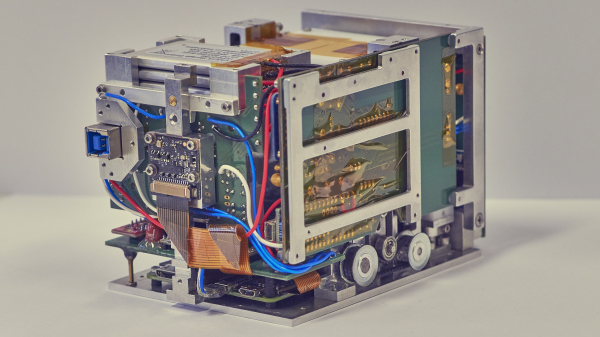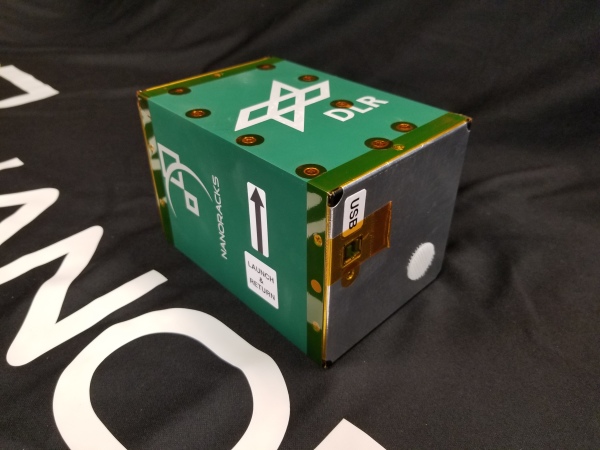The Experiment
The Experimental Setup
The experiment is limited to the size range of a NanoCube of 10x10x15 cm. The whole mechanical structure and the electronics are placed inside of this small “cube”. The figure below shows the current design.
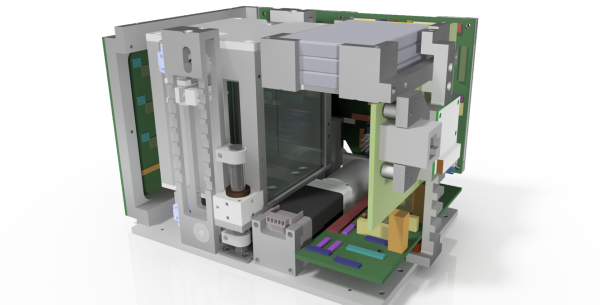
A 3D-Design-Model of the experiment.
The sample chamber contains the glass spheres (shown in gray) and is shaken by voice coils below (obscured by the stepmotor). The cap, bottom and a lower wall section of this chamber are covered by the same glass spheres (not shown in the schematic drawing).
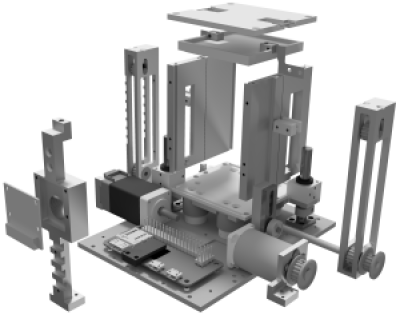
The inner glass sphere container.
To ensure that charge separation only occurss due to same surface tribocharging, lowering the cap with a stepmotor reduces the volume inside the chamber. This limits the movement of the spheres to a small volume (with matching surfaces) and enables also to restart the experiment. The sample agglomeration is observed with a camera in transmitted LED-light configuration. The experiment is controlled via a Rasberry Pi Zero (in front of the stepmotor) and an electronic board. Higher power consumption and inrush peaks are buffered with a powerbank.
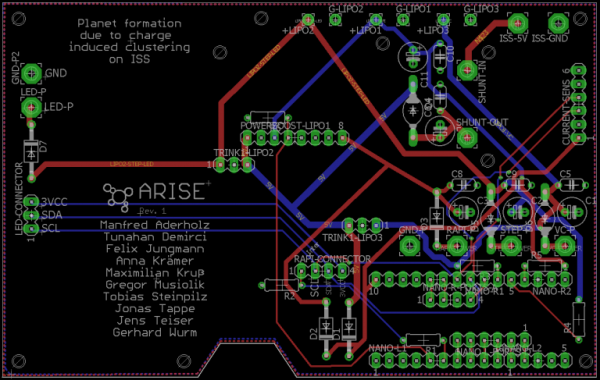
One of the power boards for the experiment.
We are planing to record series of images which will be interpreted on the ground. This will give us information about the formation, structure and size of the clusters.
Gallery
